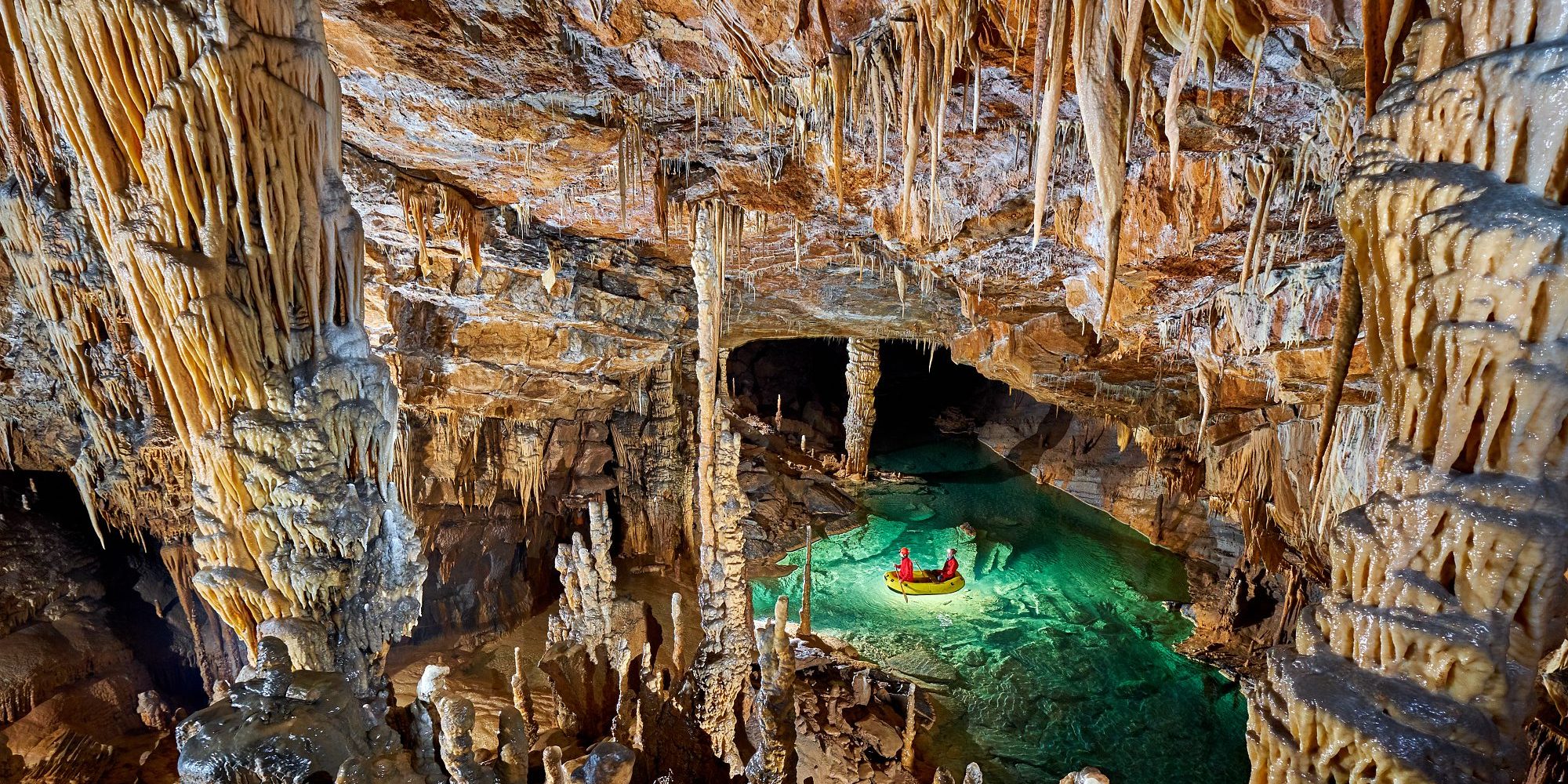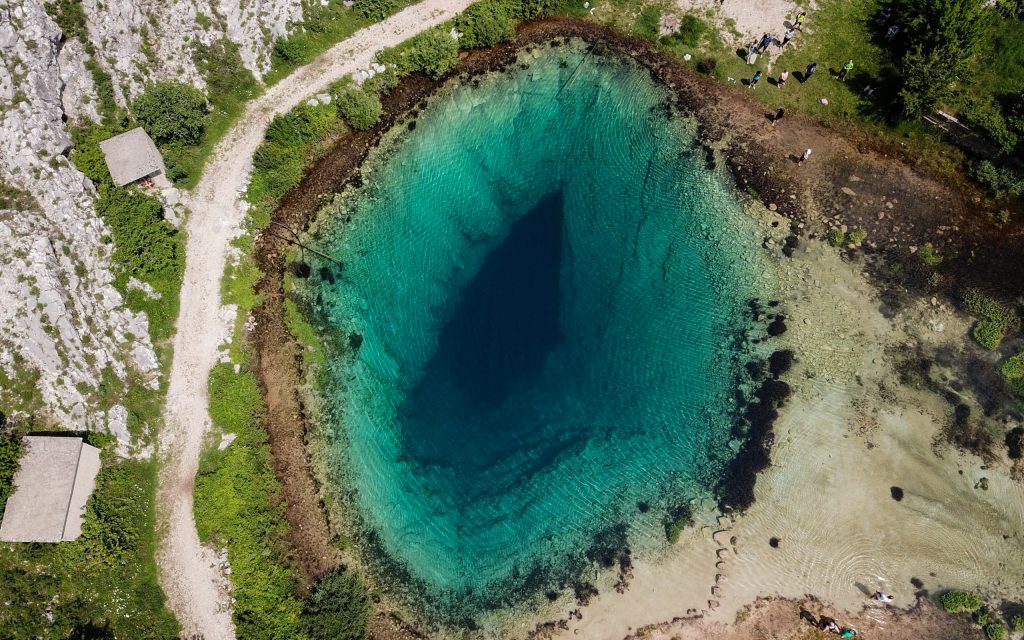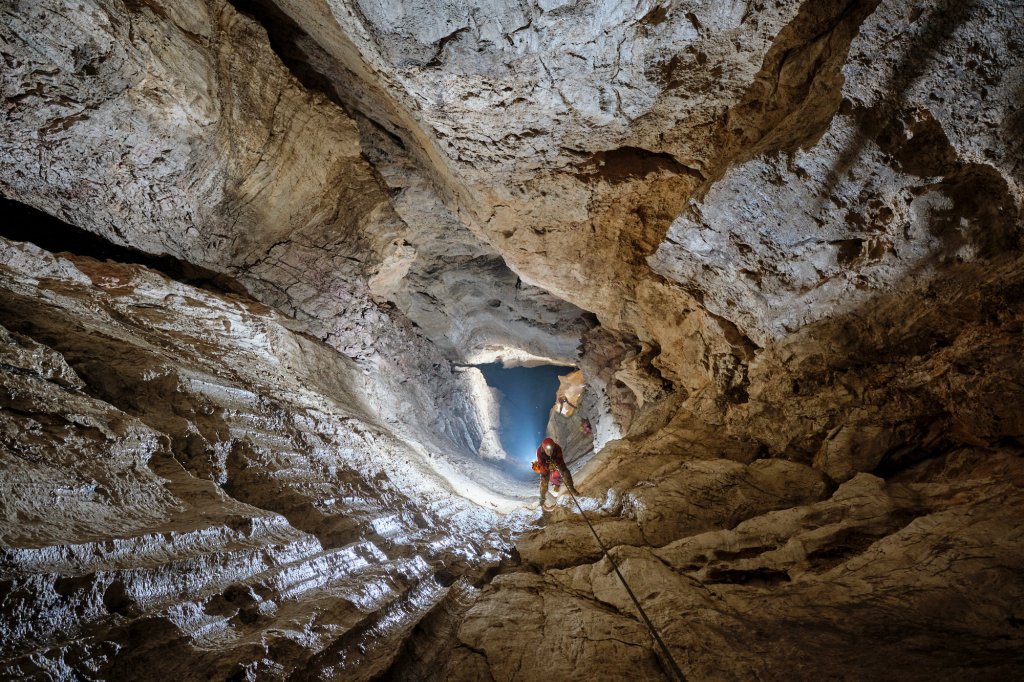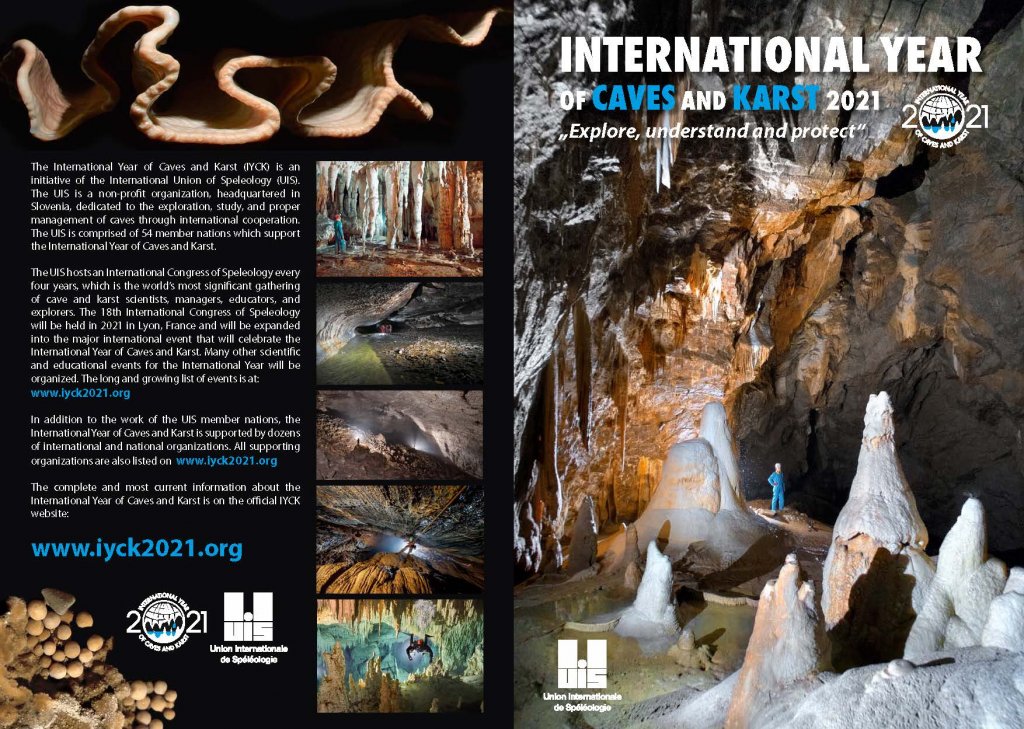
George Veni is an internationally recognized hydrogeologist specializing in caves and karst terrains having conducted extensive karst research throughout the United States and in several other countries. He is Executive Director of the US National Cave and Karst Research Institute and was elected President of the International Union of Speleology (UIS) in 2017.
Why caves, and what is karst?
Karst is a type of landscape that covers about 20 % of the world’s land surface. Karst is created by water naturally dissolving certain types of bedrock. On the surface, karst takes many forms, which makes it difficult for the average person to recognize. Some are dramatic and scenic, and much of karst landscapes is hidden from view in the cave systems.
Caves and karst are priceless resources. Hundreds of caves are open to tourism around the world, many in UNESCO World Heritage sites and Global Geoparks. About 150 million tourists visit caves each year, providing vital support to many national economies. Karst aquifers provide an estimated 10 % of the world’s drinking water and include the largest wells and springs on Earth.

What is the importance of the caves and karst system to the biodiversity of the planet?
Caves and karst are home to many of the planet’s most diverse, important, and rare ecosystems, supporting ecological diversity above and below the ground. The world’s most significant cultural and archaeological sites often are found in karstic and non-karstic caves. While caves and karst benefit all societies, they also present some unique challenges.
The caves and related conduits of karst aquifers offer essentially no filtration of pollutants. Karst aquifers are the most complex, least understood, most difficult to model, and most easy to contaminate groundwater supplies. They are often able to transmit bacteria and chemicals rapidly over tens of kilometers undetected to vital human and ecological water sources. Collapse of the land into underlying cavities in karst results in billions of dollars in damages around the world each year, and some loss of life.
🔎 Click photos to enlarge
Do caves and karst need more visibility in the minds of policy-makers and the public?
As often hidden features and landscapes, caves and karst are generally poorly understood. Few scientists and natural resource managers are adequately trained to properly study or manage them. Many governments do not recognize caves and karst at all, or fail to recognize their importance.
Everyone around the world is affected by caves and karst, but few know it. Many streams important to communities and agriculture flow from karst springs. We can thank bats for their tremendous insect control and over 450 different foods, medicines, and other products. Each day we make new advances in cave and karst science to benefit our daily lives, and better understand how we already benefit from caves and karst. But few people understand the value of caves and karst, which is why the International Year of Caves and Karst is so important.

“Explore, understand and protect” is the theme of the International Year of Caves and Karst, which was launched in 2021 and extended through 2022. With the help of the scientific community, the International Union of Speleology (UIS) seeks to:
👨👩👧👦 Improve public understanding of how caves and karst touch the daily lives of billions of people
🌱 Promote the importance of caves and karst through sustainable development, particularly in water quality and quantity, agriculture, geotourism/ecotourism, and natural/cultural heritage
🌏 Demonstrate how the study and proper management of caves and karst is critical to global economic and environmental health;
📊 Build worldwide educational capacity through activities targeted on cave and karst science;
🔄 Promote awareness of the interdisciplinary nature of cave and karst science and management, and emphasize how interactions between different areas of science and management will be needed increasingly in future research, education, and environmental protection; and
🤝 Establish durable partnerships to ensure that these activities, goals and achievements continue beyond the International Year of Caves and Karst.
To learn more about the International Year of Caves and Karst, join as a partner, attend or organize events, visit www.iyck2021.org or contact UIS President Dr. George Veni at [email protected].
The International Year of Caves and Karst is organized by the International Union of Speleology (UIS), an Affiliate Member of the International Science Council. The UIS and its 55 member counties are joined by (as of 15 March 2021) 164 partnering organizations from around the world in celebrating the International Year of Caves and Karst, which thus far have conducted over 40 events and have almost a hundred planned.

Feature image: Križna Cave in Slovenia by Peter Gedei